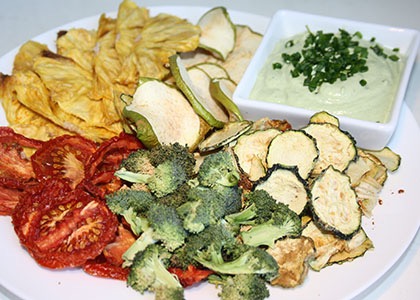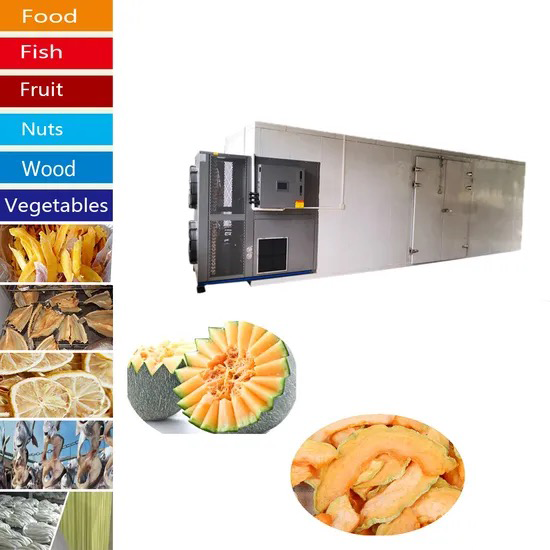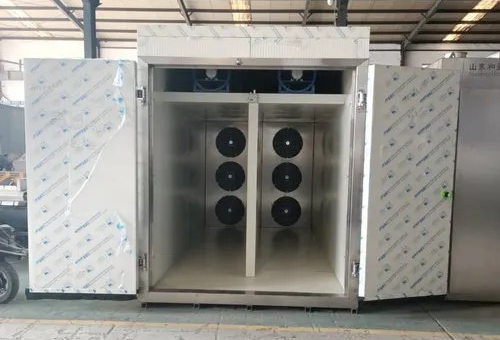
Content Menu
● Understanding Food Dehydration
● Benefits of Using a Food Dehydrator
● Choosing the Right Food Dehydrator
● Preparing Your Food for Dehydration
● Setting Up Your Food Dehydrator
● Operating Your Food Dehydrator
● Tips for Successful Dehydration
● Common Mistakes to Avoid
● Creative Uses for Dehydrated Foods
● Conclusion
● FAQ
>> 1. What types of foods can I dehydrate?
>> 2. How long does it take to dehydrate food?
>> 3. Can I dehydrate frozen fruits or vegetables?
>> 4. How do I know when my food is done?
>> 5. Can I use my dehydrator for making jerky?
● Citations:
Food dehydrators are versatile appliances that allow you to preserve various foods by removing moisture. This process enhances the shelf life of fruits, vegetables, meats, and herbs while retaining their nutritional value. This guide will walk you through the steps of using a food dehydrator effectively, along with tips for optimal results.

Understanding Food Dehydration
Dehydration is the process of removing moisture from food, which inhibits the growth of bacteria, yeasts, and molds. This method is not only a great way to preserve food but also to create healthy snacks. Foods that are commonly dehydrated include:
- Fruits (e.g., apples, bananas, mangoes)
- Vegetables (e.g., tomatoes, peppers, carrots)
- Herbs (e.g., basil, thyme)
- Meats (e.g., jerky)
Benefits of Using a Food Dehydrator
- Nutritional Preservation: Dehydrating food retains most nutrients.
- Cost-Effective: It allows you to buy seasonal produce in bulk and preserve them for later use.
- Healthy Snacks: You can create your own snacks without added sugars or preservatives.
- Convenience: Dried foods are lightweight and easy to store.
Choosing the Right Food Dehydrator
When selecting a food dehydrator, consider the following features:
- Capacity: Choose one that fits your needs based on how much food you plan to dehydrate at once.
- Temperature Control: Look for models with adjustable temperature settings for different types of food.
- Fan Placement: A horizontal airflow design can provide more even drying compared to vertical airflow models.
Preparing Your Food for Dehydration
1. Select Fresh Produce: Choose ripe, high-quality fruits and vegetables.
2. Wash Thoroughly: Clean all produce under running water to remove dirt and pesticides.
3. Cut Uniformly: Slice fruits and vegetables into uniform pieces (typically 1/4 inch thick) to ensure even drying. A food mandoline can help achieve consistent slices.
4. Pre-Treating (Optional): Some fruits may benefit from pre-treatment to prevent browning. Common methods include dipping in lemon juice or blanching vegetables briefly in boiling water.
5. Remove Excess Moisture: Pat dry fruits and vegetables with a paper towel before placing them in the dehydrator. This step can help reduce drying time.

Setting Up Your Food Dehydrator
1. Initial Setup:
- Remove all packaging.
- Wash trays and accessories in warm soapy water.
- Place the dehydrator on a stable surface near an outlet.
2. Preheat the Dehydrator:
- Turn on the dehydrator at the highest temperature setting for about 30 minutes before loading food. This helps eliminate any residues from manufacturing.
3. Load the Trays:
- Arrange food in a single layer on the trays without overlapping to allow proper air circulation.
Operating Your Food Dehydrator
1. Temperature Settings:
- Set the temperature according to the type of food being dehydrated:
- Fruits: 135°F (57°C)
- Vegetables: 125°F (52°C)
- Herbs: 95°F (35°C)
- Meats: 160°F (71°C)
2. Timing:
- Drying times vary depending on the type of food and thickness of slices.
- Check your dehydrator's manual for specific guidelines.
3. Monitor Progress:
- Rotate trays every few hours if necessary for even drying.
- Check for doneness by testing a piece; it should be flexible but not sticky.
4. Cooling and Storing:
- Once dried, let the food cool before storing it in airtight containers.
- Store in a cool, dark place or refrigerate for extended shelf life.
Tips for Successful Dehydration
- Do Not Overload Trays: Overcrowding can lead to uneven drying.
- Use Non-Stick Sheets: For blended foods like fruit leathers, non-stick sheets can make removal easier.
- Keep Records: Document your drying times and temperatures for future reference.
- Avoid Cross Contamination: If dehydrating meat, do so separately from other foods to prevent contamination.
- Check Frequently: Regularly check your food during dehydration to ensure it is drying evenly and not over-drying.
Common Mistakes to Avoid
1. Not Prepping Food Properly:
Failing to wash or cut food uniformly can lead to uneven dehydration results.
2. Incorrect Temperature Settings:
Using too low a temperature can cause bacterial growth, while too high can lead to case hardening where moisture is trapped inside.
3. Ignoring Dryness Levels:
Not checking if food is completely dry before storing can result in spoilage due to retained moisture.
4. Storing Improperly:
Storing dehydrated foods without proper sealing or in warm places can lead to mold growth or spoilage.
5. Overloading Trays:
Packing trays too tightly prevents air circulation and leads to uneven drying results.
Creative Uses for Dehydrated Foods
Once you've mastered dehydration techniques, consider these creative applications:
- Homemade Trail Mixes: Combine dried fruits, nuts, and seeds for nutritious snacks perfect for hiking or travel.
- Dried Soups and Stews: Prepare complete meals by dehydrating cooked soups or stews; just add water when ready to eat.
- Fruit Leathers: Blend fruits into a puree and dehydrate them into chewy snacks that are great for kids.
- Herb Seasonings: Dry fresh herbs and grind them into powders for homemade seasoning blends.
Conclusion
Using a food dehydrator can be a rewarding experience that not only helps you preserve food but also encourages healthy eating habits. By following these steps and tips, you can effectively use your dehydrator to create delicious snacks and meals that last longer without losing their nutritional value.

FAQ
1. What types of foods can I dehydrate?
You can dehydrate fruits, vegetables, herbs, meats (for jerky), and even some grains and flowers.
2. How long does it take to dehydrate food?
Drying times vary widely depending on the type of food and thickness of slices but typically range from 4 to 12 hours.
3. Can I dehydrate frozen fruits or vegetables?
Yes! Thawed frozen fruits and vegetables can be dehydrated directly without further preparation since they are often pre-cut and blanched.
4. How do I know when my food is done?
Dried foods should be flexible yet not sticky or moist when finished. For example, fruit should be leathery but not tacky.
5. Can I use my dehydrator for making jerky?
Absolutely! Make sure to marinate your meat beforehand and set your dehydrator at the appropriate temperature (160°F) for safe drying.
Citations:
[1] https://www.cnet.com/pictures/tips-for-using-your-new-dehydrator/
[2] https://www.freshoffthegrid.com/dehydrating-food/
[3] https://www.youtube.com/watch?v=rR2G5UO-5Ms
[4] https://westonbrands.com/weston-dehyrating-tips
[5] https://homesteadingfamily.com/preservation-101-intro-to-dehydrating-food/
[6] https://www.commercialdehydrators.com.au/dehydrating-recipes-filters
[7] https://www.allrecipes.com/article/how-to-use-a-food-dehydrator/
[8] https://www.rei.com/learn/expert-advice/how-to-dehydrate-food.html
[9] https://blog.rootsandharvest.com/dehydrating-food-recipes-and-methods/
[10] https://www.healthline.com/nutrition/dehydrated-food











